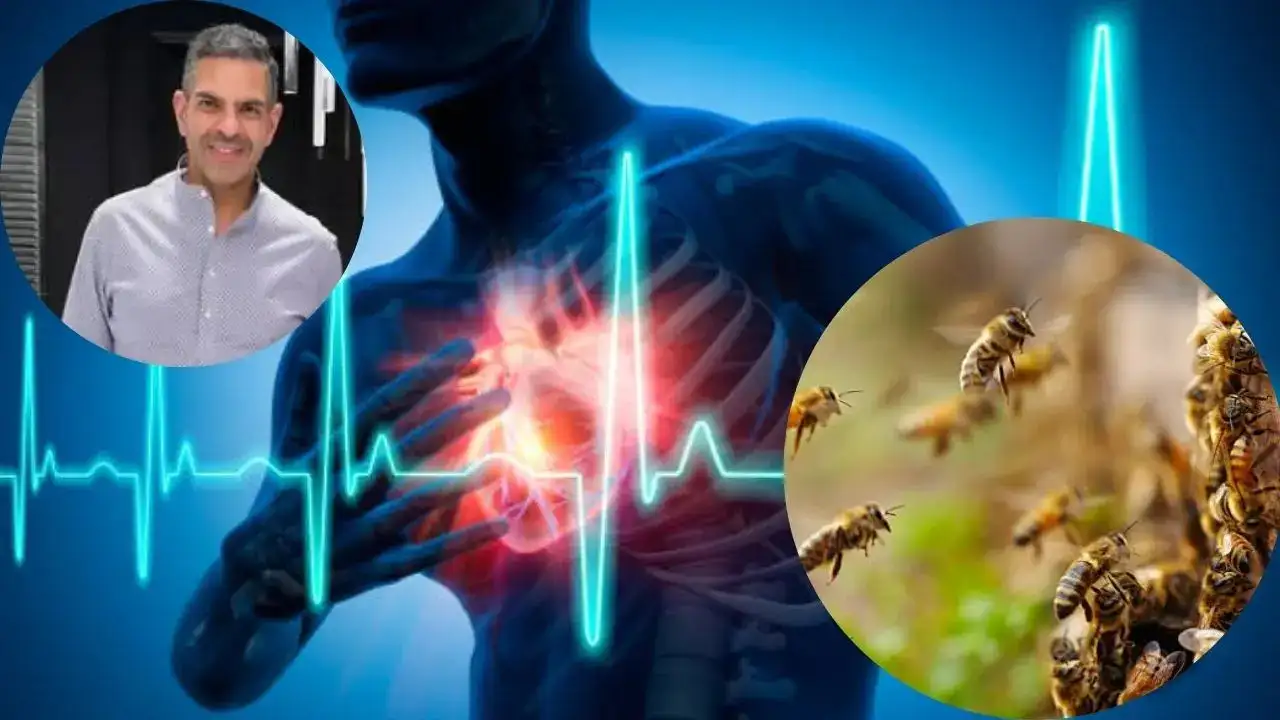
It may come across as a bizarre occurrence, but swallowing a bee accidentally has caused many such heart issues (Pic: Instagram/iStock)
Renowned industrialist Sunjay Kapur died of a heart attack which got triggered after he reportedly swallowed a bee during a polo match in England. Fifty-three-year-old Sunjay, who was previously married to actor Krisma Kapoor, was the chairman of Sona Comstar – a global automotive systems and components manufacturer – and is believed to have collapsed after suffering from chest pain while the match was on.
According to news reports, it may come across as a bizarre occurrence, but swallowing a bee accidentally has caused many such heart issues across the world in the past as well.
In a case study released by the National Institutes of Health, a 41-year-old man envenomed by a bee sting had developed a typical course of myocardial infarction – but the electrocardiogram changes were reversed to almost normal limits. He had a nonsignificant mild lesion in the proximal port of the right coronary artery in coronary angiography. Similarly, a rower, who had swallowed a bee, had choked on the insect, leading to heart failure.
How does a bee cause heart issues?
Doctors say swallowing a bee or getting stung by it causes low oxygen saturation, leading to STEMI or ST-elevation myocardial infarction. It is a serious type of heart attack characterised by a complete blockage of a coronary artery, leading to a lack of blood and oxygen to the heart muscle.
This type of heart attack is life-threatening and requires immediate medical attention.
According to experts, STEMI can be caused by Kounis syndrome – an acute coronary syndrome caused by an allergic reaction or strong immune reaction to a drug or other substance. In Kapur’s case, maybe the bee caused an allergy resulting in an MI. Kounis syndrome is often missed or underdiagnosed, so understanding the disease process and clinical presentation while having a high suspicion for the problem is compulsory.
Even though it is a rare condition, experts say the same mediators released from the same inflammatory cells are also present in acute coronary events of non-allergic etiology. These cells are not only present in the culprit region before plaque erosion or rupture, but they also release their contents just before an actual coronary event.
Also, if the swallowed bee stings you, the venom sac and a barbed stinger – which acts as a defence mechget injected into the skin, often leaving behind the stinger. This venom is a potent mixture of proteins and molecules that can cause pain, swelling, itching, and irritation in most people.
“A bee sting has toxins that, in some individuals, can trigger a severe allergic reaction called anaphylaxis. This reaction can lead to a sudden drop in blood pressure, airway constriction, and, in extreme cases, cardiac arrest. In Sunjay Kapur’s case, the sting may have caused a swift systemic response, placing acute stress on the heart and possibly triggering a fatal heart attack," Dr Rajiv Bhagwat, Senior Consultant Cardiologist, Breach Candy Hospital, told Times Now.
How to manage your heart?
While doctors say it is not easy to manage Kounis syndrome and treatment can be challenging, it is important to do it well within a stipulated time to ward off any danger.
According to experts, beta blockers can be beneficial, as they can contain the condition well. An epinephrine pen – which treats the effect of anaphylaxis – can give quick relief as well. "Immediate medical attention is critical in such situations, as even a single sting can prove life-threatening for those with underlying heart conditions or severe allergic sensitivity," said Dr Bhagwat.
